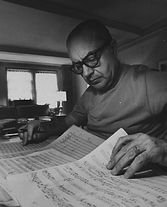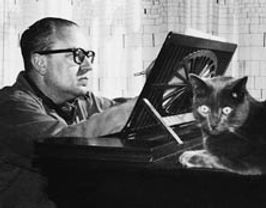Barbara Nissman
"...one of the last pianists in the grand romantic tradition of Liszt, Rachmaninoff, and Rubinstein"
Barbara Nissman
"...one of the last pianists in the grand romantic tradition of Liszt, Rachmaninoff, and Rubinstein"
Barbara Nissman
"...one of the last pianists in the grand romantic tradition of Liszt, Rachmaninoff, and Rubinstein"
Barbara Nissman
"...one of the last pianists in the grand romantic tradition of Liszt, Rachmaninoff, and Rubinstein"
Barbara Nissman
"...one of the last pianists in the grand romantic tradition of Liszt, Rachmaninoff, and Rubinstein"
Barbara Nissman
"...one of the last pianists in the grand romantic tradition of Liszt, Rachmaninoff, and Rubinstein"
Barbara Nissman
"...one of the last pianists in the grand romantic tradition of Liszt, Rachmaninoff, and Rubinstein"
Barbara Nissman
"...one of the last pianists in the grand romantic tradition of Liszt, Rachmaninoff, and Rubinstein"
Barbara Nissman
"...one of the last pianists in the grand romantic tradition of Liszt, Rachmaninoff, and Rubinstein"
Barbara Nissman
"...one of the last pianists in the grand romantic tradition of Liszt, Rachmaninoff, and Rubinstein"
Barbara Nissman
"...one of the last pianists in the grand romantic tradition of Liszt, Rachmaninoff, and Rubinstein"
Barbara Nissman
"...one of the last pianists in the grand romantic tradition of Liszt, Rachmaninoff, and Rubinstein"
Barbara Nissman
"...one of the last pianists in the grand romantic tradition of Liszt, Rachmaninoff, and Rubinstein"
Barbara Nissman
"...one of the last pianists in the grand romantic tradition of Liszt, Rachmaninoff, and Rubinstein"
Barbara Nissman
"...one of the last pianists in the grand romantic tradition of Liszt, Rachmaninoff, and Rubinstein"
Barbara Nissman
"...one of the last pianists in the grand romantic tradition of Liszt, Rachmaninoff, and Rubinstein"
Barbara Nissman
"...one of the last pianists in the grand romantic tradition of Liszt, Rachmaninoff, and Rubinstein"
Barbara Nissman
"...one of the last pianists in the grand romantic tradition of Liszt, Rachmaninoff, and Rubinstein"
Barbara Nissman
"...one of the last pianists in the grand romantic tradition of Liszt, Rachmaninoff, and Rubinstein"
Barbara Nissman
"...one of the last pianists in the grand romantic tradition of Liszt, Rachmaninoff, and Rubinstein"
Barbara Nissman
"...one of the last pianists in the grand romantic tradition of Liszt, Rachmaninoff, and Rubinstein"
Barbara Nissman
"...one of the last pianists in the grand romantic tradition of Liszt, Rachmaninoff, and Rubinstein"
Barbara Nissman
"...one of the last pianists in the grand romantic tradition of Liszt, Rachmaninoff, and Rubinstein"
Barbara Nissman
"...one of the last pianists in the grand romantic tradition of Liszt, Rachmaninoff, and Rubinstein"
Barbara Nissman
"...one of the last pianists in the grand romantic tradition of Liszt, Rachmaninoff, and Rubinstein"
Barbara Nissman
"...one of the last pianists in the grand romantic tradition of Liszt, Rachmaninoff, and Rubinstein"
Barbara Nissman
"...one of the last pianists in the grand romantic tradition of Liszt, Rachmaninoff, and Rubinstein"
Barbara Nissman
"...one of the last pianists in the grand romantic tradition of Liszt, Rachmaninoff, and Rubinstein"
Barbara Nissman
"...one of the last pianists in the grand romantic tradition of Liszt, Rachmaninoff, and Rubinstein"
Barbara Nissman
"...one of the last pianists in the grand romantic tradition of Liszt, Rachmaninoff, and Rubinstein"
Barbara Nissman
"...one of the last pianists in the grand romantic tradition of Liszt, Rachmaninoff, and Rubinstein"
Barbara Nissman
"...one of the last pianists in the grand romantic tradition of Liszt, Rachmaninoff, and Rubinstein"
Barbara Nissman
"...one of the last pianists in the grand romantic tradition of Liszt, Rachmaninoff, and Rubinstein"
Barbara Nissman
"...one of the last pianists in the grand romantic tradition of Liszt, Rachmaninoff, and Rubinstein"
Barbara Nissman
"...one of the last pianists in the grand romantic tradition of Liszt, Rachmaninoff, and Rubinstein"
Barbara Nissman
"...one of the last pianists in the grand romantic tradition of Liszt, Rachmaninoff, and Rubinstein"
Barbara Nissman
"...one of the last pianists in the grand romantic tradition of Liszt, Rachmaninoff, and Rubinstein"
Barbara Nissman
"...one of the last pianists in the grand romantic tradition of Liszt, Rachmaninoff, and Rubinstein"
Barbara Nissman
"...one of the last pianists in the grand romantic tradition of Liszt, Rachmaninoff, and Rubinstein"
Barbara Nissman
"...one of the last pianists in the grand romantic tradition of Liszt, Rachmaninoff, and Rubinstein"
Barbara Nissman
"...one of the last pianists in the grand romantic tradition of Liszt, Rachmaninoff, and Rubinstein"
Barbara Nissman
"...one of the last pianists in the grand romantic tradition of Liszt, Rachmaninoff, and Rubinstein"
Barbara Nissman
"...one of the last pianists in the grand romantic tradition of Liszt, Rachmaninoff, and Rubinstein"
Barbara Nissman
"...one of the last pianists in the grand romantic tradition of Liszt, Rachmaninoff, and Rubinstein"
Barbara Nissman
"...one of the last pianists in the grand romantic tradition of Liszt, Rachmaninoff, and Rubinstein"
Barbara Nissman
"...one of the last pianists in the grand romantic tradition of Liszt, Rachmaninoff, and Rubinstein"
Barbara Nissman
"...one of the last pianists in the grand romantic tradition of Liszt, Rachmaninoff, and Rubinstein"
Barbara Nissman
"...one of the last pianists in the grand romantic tradition of Liszt, Rachmaninoff, and Rubinstein"
Barbara Nissman
"...one of the last pianists in the grand romantic tradition of Liszt, Rachmaninoff, and Rubinstein"
Barbara Nissman
"...one of the last pianists in the grand romantic tradition of Liszt, Rachmaninoff, and Rubinstein"
Barbara Nissman
"...one of the last pianists in the grand romantic tradition of Liszt, Rachmaninoff, and Rubinstein"
Barbara Nissman
"...one of the last pianists in the grand romantic tradition of Liszt, Rachmaninoff, and Rubinstein"
Barbara Nissman
"...one of the last pianists in the grand romantic tradition of Liszt, Rachmaninoff, and Rubinstein"
Barbara Nissman
"...one of the last pianists in the grand romantic tradition of Liszt, Rachmaninoff, and Rubinstein"
Barbara Nissman
"...one of the last pianists in the grand romantic tradition of Liszt, Rachmaninoff, and Rubinstein"
Barbara Nissman
"...one of the last pianists in the grand romantic tradition of Liszt, Rachmaninoff, and Rubinstein"
Barbara Nissman
"...one of the last pianists in the grand romantic tradition of Liszt, Rachmaninoff, and Rubinstein"
Barbara Nissman
"...one of the last pianists in the grand romantic tradition of Liszt, Rachmaninoff, and Rubinstein"
Barbara Nissman
"...one of the last pianists in the grand romantic tradition of Liszt, Rachmaninoff, and Rubinstein"
Barbara Nissman
"...one of the last pianists in the grand romantic tradition of Liszt, Rachmaninoff, and Rubinstein"


THREE PIANO CONCERTOS BY GINASTERA
DECEMBER 10, 2011
PIANO CONCERTO NO. 1
After the success of his First Piano Sonata, Op. 22 written in 1952, Ginastera did not compose for the piano again until 1961 when he accepted a commission from the Koussevitsky Foundation to write a new piano concerto. The influence of his popular First Sonata is apparent in the new composition, as three of the four movements of the concerto seem to be larger versions of the second, third and fourth movements of the First Piano Sonata.
The first movement’s Cadenza e varianti opens with three chords played by the orchestra, introducing a12-tone theme and answered in the piano with an elaborate, virtuosic octave cadenza- "a melodic transposition of the same row.” Ginastera goes on to state that "on these basic elements is built the whole movement, in which piano and orchestra alternate with violent contrasts. The ‘varianti’ are ten micro-structures in different moods; they are a sort of variations of the original elements.” The movement ends with a return to the orchestra/piano cadenza dialogue that builds to an intense and exciting climax.
The second movement, a scherzo alluciante, similar in mood to the First Sonata’s second movement presto misterioso, “is very fast and is played throughout with the dynamics ‘pianissimo.’ The composer uses a pointillist instrumentation and the arch form in five sections: three central symmetrical sections framed by an introduction and a coda.“ Ginastera loves contrast and color, and this movement provides both. Add to this the wonderful percussion effects of the orchestra and the title of “hallucinating” scherzo seems justified.
The third movement Adagissimo, similar to the Adagio of the First Sonata, is "an intense lyrical prelude formed by three sections which resemble a ternary form, reaching in the middle part a climax of passionate character." Ginastera also quotes a motif from the second movement of Beethoven’s Fourth Piano Concerto, recalling a similar dialogue/contest between soloist and orchestra. The movement ends quietly with Ginastera’s signature motif -– an ascending scale that imitates the open strings of the guitar.
In violent contrast to the quiet but intense slow movement, the hammering toccata begins. "The fourth and last movement, Toccata concertata with its strong and vigourous rhythms, is a real piece of bravura in which there is a constant dialogue between piano and orchestra. The form recalls the seven section rondo form, preceded by a short introduction and followed by a coda." This is the movement popularized by Emerson, Lake and Palmer, and containing all the elements found in the fourth-movement Allegro ruvido of the First Piano Sonata. What primitive, raw energy is unleashed here! The orchestra and piano join forces and pull out all the stops to produce an exciting conclusion to one of the masterworks in the twentieth-century piano concerto literature. Listening to the First Concerto leaves no doubt that the composer is a superb craftsman who knows what true virtuosity is all about!